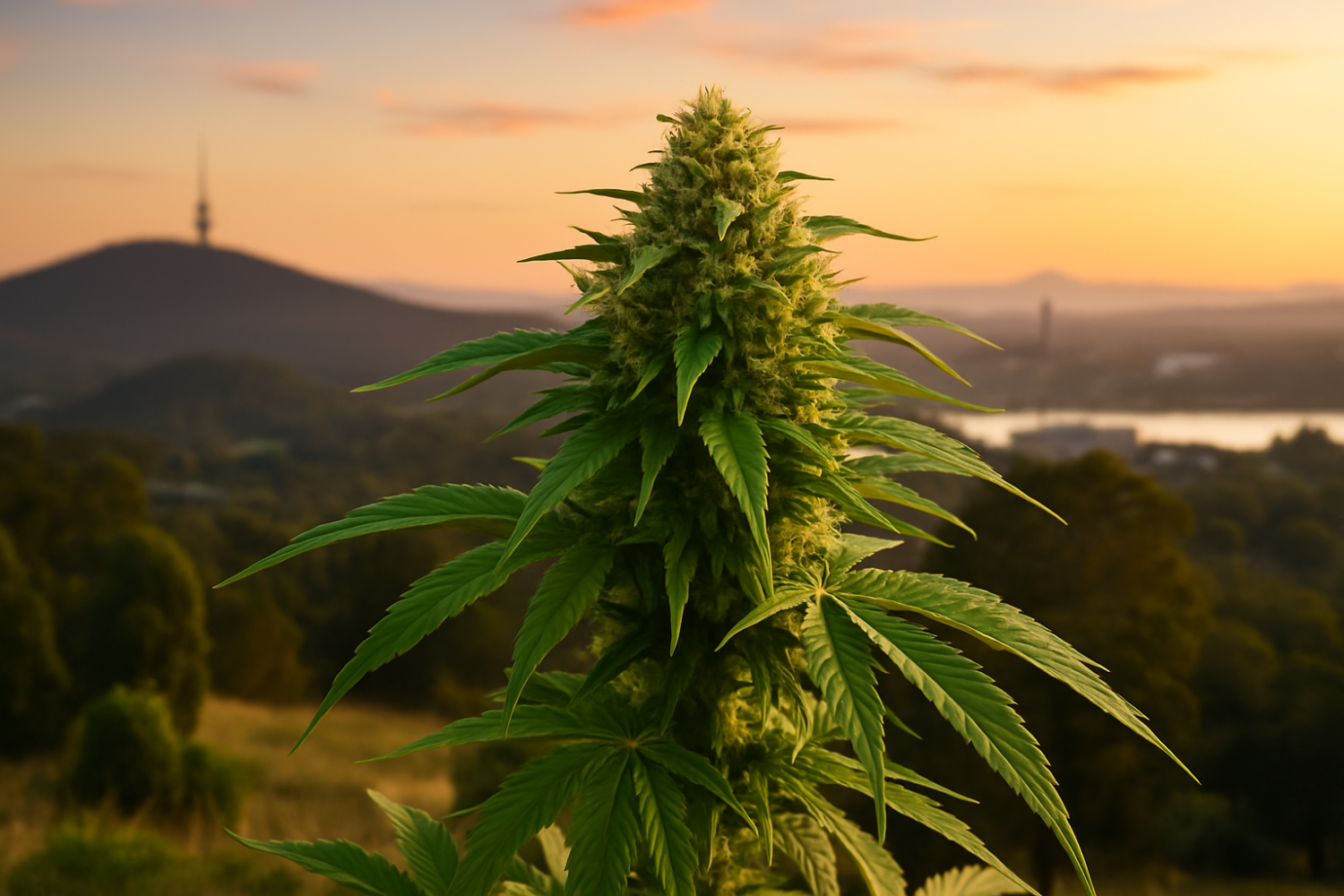Cannabis in Australia as it pertains to history is complex. It is a country divided by its laws but united by growing curiosity and cultural acceptance. While medicinal use is federally regulated and expanding, recreational legalization remains limited to one jurisdiction: the Australian Capital Territory. From state-by-state differences to federal frameworks and the booming medical industry, cannabis in Australia reflects both progress and resistance.
Here’s a deep look into what’s legal, what’s changing, and what the future might hold.
The Foundation of Law for Cannabis in Australia
The conversation around cannabis in Australia begins with a dual system — federal and state. Federally, cannabis remains a controlled substance under the Narcotic Drugs Act of 1967, which governs everything from cultivation to export for medicinal and scientific purposes. It works in tandem with the Therapeutic Goods Act of 1989, which ensures that any cannabis-based medicines meet strict safety and manufacturing standards. Together, they form the backbone of national control.
These federal laws set the floor, not the ceiling. Each state and territory enforces its own rules for possession, supply, and use, meaning that an act legal in one part of the country could result in arrest in another. The Poisons Standard, also known as the “scheduling system,” classifies cannabis and THC as controlled narcotics, reinforcing federal oversight.
In short, the national government manages how cannabis is grown, produced, and prescribed — but local governments decide what happens when someone lights up a joint or grows a plant at home.
How Medicinal Cannabis in Australia Became Legal
In 2016, the Australian government officially legalized medicinal cannabis, marking a historic shift. This change didn’t come from a cultural movement or a referendum, but from a growing recognition within the health sector that certain cannabinoids could ease conditions like chronic pain, epilepsy, nausea, and anxiety.
To access medicinal cannabis, Australian patients need a doctor’s approval. Most use one of two legal channels: the Special Access Scheme, where a doctor applies for permission from the Therapeutic Goods Administration (TGA) on a case-by-case basis, or the Authorised Prescriber Program, which allows approved practitioners to prescribe cannabis directly.
Medicinal cannabis in Australia comes in many forms — oils, tinctures, capsules, lozenges, sprays, and even dry flower for vaporization. However, most of these products are unregistered, meaning they haven’t undergone the same level of testing and evaluation as traditional pharmaceutical drugs. Doctors and patients navigate a tightly controlled but evolving landscape where evidence, cost, and accessibility remain ongoing challenges.
Despite those hurdles, the market continues to grow. In less than a decade, Australia’s medicinal cannabis industry has evolved from a niche import sector into a multi-million-dollar domestic ecosystem of cultivators, processors, and brands producing everything from CBD oils to high-THC therapeutic strains.
The Patchwork of Cannabis Laws Across the Country
While medicinal cannabis is federally sanctioned, recreational use remains largely prohibited throughout Australia — with one exception.
The Australian Capital Territory (ACT), home to Canberra, legalized limited personal possession and cultivation in 2020. Under its law, adults over 18 can possess up to 50 grams of dried cannabis and grow up to two plants per person, with a household limit of four. However, buying, selling, or using cannabis in public remains illegal. You can grow it, but not sell it, and crossing into New South Wales with a single joint could still get you arrested.
Everywhere else, cannabis remains illegal for recreational use. In New South Wales, Victoria, Queensland, Western Australia, Tasmania, and South Australia, penalties vary from fines to criminal charges depending on the amount and context.
Some regions, like South Australia and the Northern Territory, have adopted decriminalized approaches, meaning small personal-use amounts often lead to fines instead of jail time. But make no mistake — recreational cannabis in Australia remains an offense under criminal law.
This patchwork of laws has created confusion and inconsistency.
Someone living in Canberra might legally grow two cannabis plants in their backyard, while someone in Sydney doing the same could face prosecution. Even within decriminalized regions, enforcement often depends on local police discretion.
That legal inconsistency has sparked growing calls for national reform — not only to align laws but also to reflect public opinion, which has shifted dramatically toward support for legalization.
The Rise of the Australian Cannabis Industry
Legalization of medicinal cannabis in 2016 didn’t just open doors for patients — it opened a new economic frontier. Licensed cultivators and manufacturers began building out infrastructure under the supervision of the Office of Drug Control (ODC). Within a few years, dozens of companies were producing or importing medicinal cannabis domestically, contributing to a fast-growing market that now serves hundreds of thousands of patients.
Australia’s cannabis industry includes everything from agricultural producers and biotech firms to pharmacies and wellness startups. Cultivation facilities have appeared in regional areas of Queensland, Victoria, and South Australia, generating new jobs and economic opportunities.
The sector’s growth hasn’t been without challenges. Regulatory hurdles are significant: each producer needs multiple licenses for cultivation, manufacturing, and supply, all subject to rigorous security, inspection, and compliance checks. The high cost of licensing and strict GMP (Good Manufacturing Practice) standards mean that operating legally requires millions in upfront investment.
Still, optimism remains high. Exports to Europe and Asia are increasing, and the quality of Australian-grown cannabis has earned international attention. Investors view the country as one of the most promising regulated markets in the Southern Hemisphere — provided laws eventually expand beyond medicine into adult use.
Public Opinion and the Push for Legalization
For decades, cannabis in Australia was treated purely as a criminal issue. That stance is changing rapidly.
According to the 2022–2023 National Drug Strategy Household Survey, around 80% of Australians now believe cannabis should be either decriminalized or legalized. The same report found that roughly 11% of Australians used cannabis in the past year, making it the nation’s most commonly consumed illicit drug.
Political momentum is also building. The Australian Greens introduced a Legalising Cannabis Bill in 2023, aiming to establish a national framework for licensed cultivation, retail sales, and taxation. The proposal didn’t pass, but it sparked a major national conversation about the economic, social, and health impacts of prohibition.
State governments are watching closely. In New South Wales and Victoria, parliamentary committees have explored pathways for reform, citing public demand, harm-reduction potential, and policing inefficiencies. Legal experts argue that a health-focused model — rather than a punitive one — could reduce incarceration rates, redirect police resources, and generate tax revenue in the billions.
Even among conservative lawmakers, there’s growing recognition that prohibition is costly and inconsistent with community attitudes. The question isn’t if cannabis in Australia will move toward legalization, but when — and what form that legalization will take.
Hemp, CBD, and Low-THC Reform
Parallel to the cannabis debate is the rise of the industrial hemp and CBD industries. Hemp — cannabis containing less than 1% THC — is legal to cultivate in every Australian state under strict licensing. Farmers use it for fibre, textiles, seeds, and increasingly, CBD extraction.
CBD (cannabidiol) has also seen major policy changes. In 2021, the TGA down-scheduled low-dose CBD from prescription-only to “pharmacist-only,” theoretically paving the way for over-the-counter sales. However, no products have yet been fully approved for shelf sale. For now, Australians still need a doctor’s prescription to legally obtain CBD oils or capsules.
CBD has become the gateway product for many Australians — a way to engage with cannabis therapeutics without the high. The growing global acceptance of CBD has softened stigma and made cannabis discussions more mainstream, setting the stage for broader reform.
Driving, Testing, and Enforcement of Cannabis in Australia
One of the most controversial aspects of Australia’s cannabis laws lies in driving enforcement. Every state and territory has zero-tolerance laws for THC, meaning drivers can face penalties simply for having trace amounts of THC in their system — even if prescribed medicinally.
Unlike alcohol, where impairment is measured by blood-alcohol content, THC can remain detectable long after its effects wear off. Medical users of cannabis in Australia have reported losing licenses despite being under doctor supervision.
Advocacy groups for cannabis in Australia and legal experts are now pushing for evidence-based impairment testing rather than strict detection limits, arguing that current rules discriminate against patients.
Law enforcement of cannabis in Australia also uses roadside saliva testing, and penalties can include license suspension, heavy fines, or criminal records. As medicinal use expands, reforming these driving laws is becoming a critical next step for a fair and functional cannabis policy.
Health, Safety, and Harm Reduction of Cannabis in Australia
From a public health perspective, Australian policymakers are increasingly shifting away from moral arguments toward harm reduction. The focus is on minimizing risks through education, age restrictions, and product standards rather than punishment.
Health researchers continue to explore both the benefits and risks of cannabis use. Studies suggest potential therapeutic effects for pain, anxiety, and sleep disorders, but also point to risks, especially for adolescents and individuals with mental health vulnerabilities. Policymakers are balancing these factors while considering broader social outcomes — reduced arrests, safer products, and regulated access.
Many experts argue that prohibition of cannabis in Australia has failed to reduce harm. Instead, it has pushed consumers toward unregulated black-market products, often of uncertain quality and potency. A regulated system, they say, would allow governments to set standards, monitor safety, and tax the industry responsibly.
The Economic Argument for Legalization
The economics of cannabis reform are impossible to ignore. Legalization advocates point to Canada, where tax revenue from cannabis exceeded $1 billion within a few years of regulation. One example is Victoria in British Columbia. Australia, with its comparable population size and strong agricultural infrastructure, could see similar returns.
Analysts estimate a legal recreational market could generate $1–2 billion annually in tax revenue while creating thousands of jobs in farming, retail, logistics, and tourism.
Beyond money, legalization would free up law enforcement resources currently spent on minor cannabis offences. Decriminalization in the Northern Territory and South Australia already demonstrated that reduced policing doesn’t lead to increased crime — a fact fueling the reform conversation nationally.
Challenges and the Road Ahead
Despite momentum, legalization in Australia faces several obstacles. The biggest is the federal framework, which keeps cannabis classified as a narcotic. Any national adult-use system would need to reconcile state-level reform with federal restrictions on cultivation, manufacturing, and trade.
There’s also political hesitation. While public opinion favors reform, national leaders have been cautious, often citing road safety, youth protection, and international treaty obligations.
Still, incremental change seems inevitable. More doctors are prescribing medicinal cannabis, more patients are using it legally, and the stigma surrounding the plant continues to fade. With growing public support and a maturing industry, Australia appears poised for broader reform — whether through decriminalization, pilot retail programs, or eventual national legalization.
FAQs: Cannabis in Australia (2025 Update)
Is cannabis legal in Australia?
Not fully. Medicinal cannabis is legal under prescription nationwide. Recreational cannabis remains illegal in every state except the ACT, where adults can grow and possess small personal amounts.
Can I buy weed in Australia legally?
Not for recreation. There are no licensed cannabis stores or dispensaries. Medicinal cannabis can only be purchased through approved pharmacies with a doctor’s prescription.
Can I grow my own plants?
Only in the Australian Capital Territory. Residents can grow two plants per person, with a maximum of four per household. Everywhere else, growing cannabis is illegal unless licensed for medical or research purposes.
Is CBD legal without a prescription?
Not yet. The TGA has approved the idea of pharmacist-only CBD products, but none have passed final testing for over-the-counter sale. For now, you still need a prescription.
Can I drive after using cannabis?
No. Driving with THC in your system is illegal, regardless of impairment or prescription status. Roadside saliva testing enforces a zero-tolerance policy.
Is Australia moving toward full legalization?
The trend points that way. Public opinion overwhelmingly supports reform, and national parties like The Greens are pushing for legal adult use. However, any change will likely come gradually through decriminalization and medical expansion first.
What’s the outlook for the cannabis industry?
Strong. Domestic cultivation and exports are growing, and investor interest remains high. Australia is positioning itself as a global supplier of premium medicinal cannabis — and possibly, one day, adult-use cannabis as well.
The Future of Cannabis in Australia
The cannabis movement in Australia sits at a crossroads. Medicinal use is normalized, stigma is fading, and reform is no longer taboo in mainstream politics. The ACT’s experiment with personal use is proof that legalization doesn’t create chaos — it creates clarity.
Over the next few years, the biggest questions will center on how fast other states follow suit, how driving and workplace laws evolve, and whether the federal government is ready to take the next step.
What’s certain is that cannabis has already changed the way Australians think about health, policy, and freedom, and that shift is only accelerating.







